Now Reading: Top 20 Best Places to Visit in Mumbai for Beaches, Markets & Heritage
-
01
Top 20 Best Places to Visit in Mumbai for Beaches, Markets & Heritage

Top 20 Best Places to Visit in Mumbai for Beaches, Markets & Heritage
1. The Gateway of India
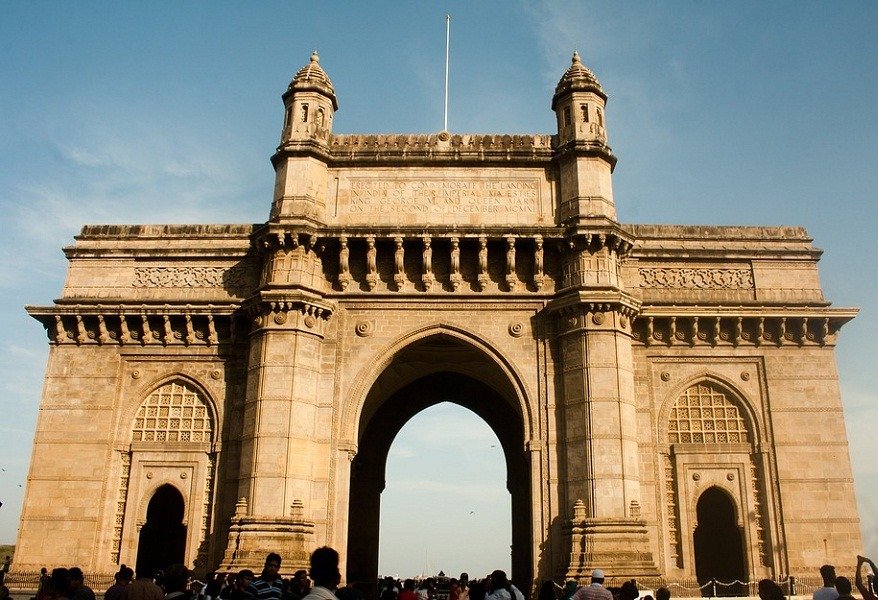
Located at Apollo Bunder waterfront the Gateway of India functions as a famous national heritage monument which dominates the Mumbai cityscape. The architectural masterpiece stands by the Arabian Sea to serve both as a relic of the colonial period and as a top destination for tourists viewing Mumbai Darshan sites.
History
The Gateway of India received its name from its purpose to applaud King George V and Queen Mary upon their arrival in 1911. The final design by George Wittet received official sanction in 1914 and on 31st March 1911 the foundation stone received its first placement. In 1924 the structure finished its construction to create a grand entrance which British Viceroys and Governors used when arriving in India.
During British administration the Gateway of India adopted status as an imperial monument which welcomed powerful visitors while saying goodbye to them. When India gained independence in 1948 the Gateway of India became a witness to the emotional departure of final British military forces marching through this entryway.
Travellers visiting Mumbai by ship initially saw the Gateway of India that stands at the termination of Chhatrapati Shivaji Marg at Mumbai Harbour. The structure carries the nickname Taj Mahal of Mumbai because of its majestic beauty and vital historical value.
The Gateway and Its Maritime Significance
Maritime activities gather at the Gateway of India while boat service operates for numerous departure points.
The ferry from Elephanta Caves Ferry provides a 50-minute journey to visit the historical UNESCO World Heritage Site ancient Elephanta Caves.
Recreational boat operators use personal yachts and speedboats to give patrons vivid views of Mumbai’s shoreline.
- Five boat jetties operate within easy distance of the gateway.
- The Atomic Research Centre operates its boat services at the first jetty.
- Visitor transport runs through the commercial ferry ports of the second and third jetties.
- The fourth jetty remains closed.
- The fifth boat dock operates solely for the Royal Bombay Yacht Club members.
Best Time to Visit
From November through February visitors can find the most enjoyable conditions for exploring the Gateway of India. The magnificent sight of sea together with city skyline best appears during early mornings and evenings.
2. Chhatrapati Shivaji Terminus / Victoria Terminus, Mumbai
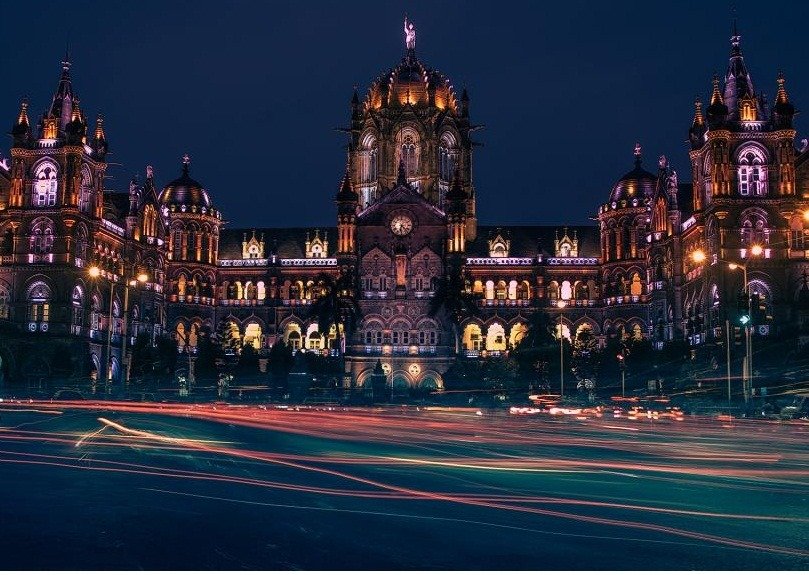
The train station Chhatrapati Shivaji Terminus which used to be named Victoria Terminus acts as Mumbai’s most important station and historic site based at Dadabhai Naoroji Road. The United Nations Educational Scientific and Cultural Organization (UNESCO) recognized this architectural marvel as a World Heritage Site in 2004 July 2nd making it a major attraction for Maharashtra tourists.
The second UNESCO World Heritage Site belonging to Indian Railways exists at CST after the Mountain Railways of Shimla, Darjeeling, and Ooty received this status in 1988. The World Heritage list includes this operational administrative building as its first functional building ever.
The Central Railways maintains its headquarters at this active railway station which establishes Mumbai’s connection with all regions of India. People traveling to see Mumbai’s heritage sites need to experience this place which stands out as an essential stop.
Frederick William Stevens served as the British architect who created the Chhatrapati Shivaji Terminus which displays magnificent Indo-Victorian Gothic architectural design. Construction for the terminal began in 1878 during the Golden Jubilee of Queen Victoria and its opening to the public took place in 1887 after completion. The railway station received its current name Chhatrapati Shivaji Terminus during 1996 as a tribute to Maratha Empire founder Chhatrapati Shivaji.
The station stands out from typical Indian buildings because it includes:
- A stone dome, multiple turrets, and pointed arches.
- The central dome showcases a 13-foot-tall sculpted female figure carrying a torch in her right arm while holding a wheel in her left hand according to artist Thomas Earp.
- The building includes sculptures of a British lion alongside an Indian tiger to symbolize the unity of British and Indian social groups.
- The station displays a full-sized sculpture of Queen Victoria in front of its central front.
- The building’s exalted look stems from the combination of vaulted roofs with Gothic spires along with pointed arches and neoclassical sculptures and intricate stone carvings.
A Vital Transportation Hub
The high number of passengers and trains at CST makes it a vital junction for both inner-city and inter-city rail transport in Mumbai. The station operates 1250 daily trains and accommodates around 3.3 million daily passengers. The railway station operates with fourteen platforms which serve both short-distance commuters and travelers taking long-distance express train services.
Central Railways maintains its administrative functions within a prominent section of the terminal structure that functions as the vital center for Indian Railways activities.
- There are multiple compelling reasons that drive travelers to visit Chhatrapati Shivaji Terminus
- You can witness a marvelous architectural example which ranks among the best Indo-Gothic constructions worldwide.
- Experience the historical significance of a UNESCO World Heritage Site which operates as a railway station.
- The Transportation Hub of Mumbai lets you see India’s most active central station in operation.
- The station stands out because it boasts excellent carvings and sculptures which exhibit superior artistic talent.
- The location provides perfect opportunities to capture amazing photographs particularly appealing to enthusiasts of both photography and history.
Best Time to Visit
Between November and February visitors will find the most favorable conditions to observe Chhatrapati Shivaji Terminus due to its mild temperatures.
Experience the terminus at dawn or dusk instead of peak commuter time to appreciate its great beauty.
3. The Siddhivinayak Temple
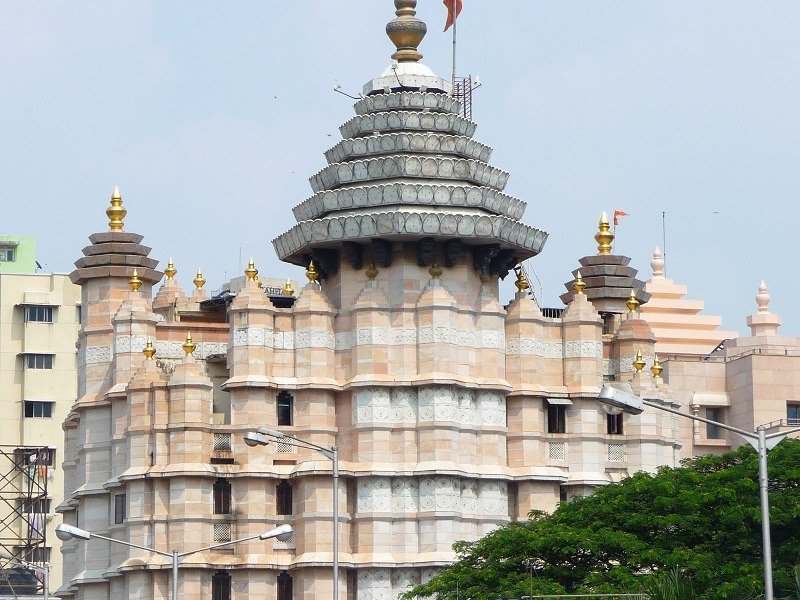
The Sri Siddhivinayak Temple stands as a holy and beloved Hindu place of worship which resides in the Prabhadevi area of Mumbai. This temple represents a sacred pilgrimage site along with being one of the wealthiest holy sites in the state and it rests exactly 10 kilometers from Chhatrapati Shivaji Terminus. Devotees together with travelers must stop at this spiritual site when they visit Mumbai to discover its spiritual heritage.
History
The Siddhivinayak Temple gained its existence through the construction work of Laxman Vithu and Deubai Patil on 19 November 1801 AD. At its origins the temple had a minimal structure to hold a 2 feet 6 inch high black stone idol of Sri Siddhivinayak that was 2 feet wide.
- The primary feature that makes the Lord Ganesha deity at Siddhivinayak Temple stand out involves three immortal characteristics.
- Contrary to most idols of Ganesha which display a left-tilted trunk this sculpture shows its trunk tilted to the right to indicate divine importance in spirituality.
- Lord Ganesha receives support from Goddess Riddhi and Siddhi who stand beside him as they signify success and prosperity.
- The presence of an eye on the forehead activates the third eye energy of Lord Shiva thus transforming the statue into a divine masterpiece.
In its earlier form the temple contained only three main components which included a sacred prayer hall and a management space and an external water reservoir. A complete renovation in 1990 turned the temple into a six-story complex which received its central dome in gold plating.
- Renovation Cost: ₹3 crore.
- Materials Used: Marble and pink granite.
- Current Structure: A sprawling temple complex with modern yet traditional architectural elements.
- Spiritual Beliefs and Devotion
People recognize the temple through its spiritual name as Navasala Pavanara Ganapathi or Navasacha Ganapathi which represents “Lord who fulfills wishes.” The temple upholds the belief that genuine devotion in prayer creates a pathway for Sri Siddhivinayak to deliver spiritual blessings.
- One of the Wealthiest Temples in Maharashtra – Receives lakhs of rupees in donations from devotees.
- A large number of Bollywood actors together with politicians and business leaders seek blessings at this shrine.
- The temple reaches complete overcapacity on Tuesday during Ganesh Chaturthi which establishes them as the most perfect days to attend the temple.
Temple Timings & Entry
Timings: 5:30 AM to 10:00 PM.
Entry Fee: Free.
4. Elephanta Caves, Mumbai
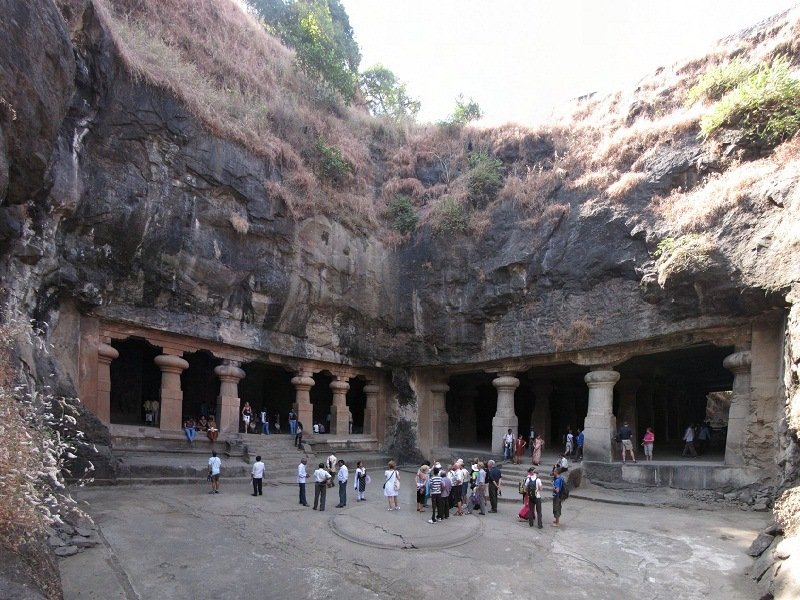
The Elephanta Caves operate as a network of sculpted caves which stand on Elephanta Island (Gharapuri) in Mumbai Harbour 17 km distant from Chhatrapati Shivaji Terminus. The UNESCO World Heritage Site status applies to these caves which make up Mumbai’s oldest historic site and represent one of Maharashtra’s most visited attractions.
History
The historical source of the Elephanta Caves eludes researchers to this day. The Chalukyas together with the Rashtrakutas are credited with constructing the locations and carvings. The island had a Chalukya regime followed by Gujarat Sultanate before the Portuguese gained control of the island during 1534 AD.
The locals initially called the island Shelsanaga but Portuguese sailors chose the name Elephanta because it housed a magnificent elephant statue. The grand statue resides at present within the museum complex of Bhau Daji Lad Museum in Byculla district of Mumbai. At the beginning of Portuguese rule the Hindu main cave operation stopped leading to damaging effects on its sculptures. The cave restoration project happened during the 1970s before UNESCO declared it as a World Heritage Site in 1987. ASI serves as the current custodian of this protected site.
Rock-cut architecture demonstrates its brilliance through the Elephanta Caves that warriors have excavated from solid basalt rock during the 5th to 8th centuries AD into two separate cave groups.
Cannon Hill: A Colonial Relic
Cannon Hill functions as a military site on Elephanta Island for defending Bombay Harbour during the era of colonial rule. The hill presents breathtaking views across the Arabian Sea although the cannons on-site no longer operate.
The Elephanta Festival
During the month of February each year Maharashtra Tourism Department organizes the Elephanta Festival. As part of the festival program Indian classical dance and music groups perform to commemorate the cultural heritage of the island.
Visitor Information
- The island is open for visitor access between 7:00 AM to 7:00 PM except Monday.
- Ferry Timings: 9:00 AM to 5:00 PM.
- People who wish to start the day by sailing from Gateway of India can take the first ferry at 9:00 AM.
- The final ferry departure for the Elephanta Caves operates at 2:00 PM.
- The Mumbai-bound ferry service ends its operations at 5:00 PM.
Entry Fees:
- ₹10 for Indian Citizens
- ₹250 for Foreign Tourists
- ₹130 for Ferry Ride
5. Juhu Beach, Mumbai

Tourists together with local residents must visit Juhu Beach which stands as a prominent Mumbai landmark. As a western city district attraction this huge beach maintains its 6-kilometer Sea Arabian waterfront view while providing delectable street food alongside active beach energy.
History
Before Mumbai transformed into a group of islands Juhu Beach established its history during the past era. Through time Juhu Beach evolved into a renowned destination among all Indian beaches. Gandhi Gram exists in this region because Mahatma Gandhi stayed here when he practiced law as a young man. Juhu has a special place in the heart of Bollywood because numerous famous actors such as Amitabh Bachchan and Anil Kapoor and Hrithik Roshan and Dharmendra make it their home base. Mumbai’s beach area has established itself as an essential part of both cultural experiences and the movie industry because it frequently appears in film and advertising productions.
- Visitors enjoy diverse attractions at Juhu Beach because it provides multiple locations to satisfy all types of interests.
- Thousands of devotees conduct extravagant Ganesh Chaturthi processions at this beach to farewell Lord Ganesha during his annual celebration.
- Visitors should try Pani Puri and Sev Puri and Pav Bhaji and Bhel Puri besides many more street snacks that are available at this beach. Food lovers can experience authentic Mumbaikar cuisine at the food stalls scattered throughout the city.
- Juhu Beach visitors can soak in the airplane departure shows at the adjacent Chhatrapati Shivaji International Airport and participate in toy train tours for children or horse and camel rides for everyone.
- The island’s many stalls provide reasonable prices on beach accessories together with local items so you can easily find items to buy.
- People love to watch the breathtaking Arabian Sea sunset at Juhu Beach so photographers combine their love of sunsets with nature appreciation.
Best Time to Visit
Juhu Beach welcomes visitors throughout the year but visitors experience the best conditions when they visit during October to March months. Visitors find the evenings especially delightful because a pleasant sea wind creates an invigorating atmosphere. During the weekends Juhu Beach becomes extremely busy because families together with couples along with tourists arrive to experience the active beach life.
6. Marine Drive
The famous coastal location Marine Drive stretches for 3 kilometers as a circular route which faces the Arabian Sea at South Mumbai. Tourists and residents equally consider Marine Drive as a vital stop due to its exceptional vistas combined with energetic bustle and remarkable nighttime beauty.
History
The urban development plan of the 1920s and 1930s led to the construction of Marine Drive which received its official name Netaji Subhash Chandra Bose Road. The thoroughfare developed into an emblem that showcases both the emotional spirit and lasting power of the city throughout its many decades. The route positioned between Nariman Point and Babulnath extends through the mountain foothills of Malabar Hill. Along twilight hours the pattern of streetlights shaped like pearl necklaces makes Marine Drive famous as the ‘Queen’s Necklace’.
- Marine Drive combines natural beauty with amusement activities as well as cultural historical value that brings visitors unique combinations.
- The extensive Marine Drive provides all recreational options from relaxing walks to running paths as well as beachside relaxation with sea breezes at your disposal.
- Sunset viewers travel to this spot because they want to experience the stunning twilight display over the Arabian Sea which captures photographers along with nature aficionados.
- People visiting Chowpatty Beach at the Marine Drive north end can shop at food stalls serving traditional plates including Bhel Puri and Pav Bhaji.
- Marine Drive functions as an event venue in Mumbai since it hosts prestigious celebrations including the Mumbai Marathon and International Fleet Review together with IAF Airshow and cultural festivals.
- The area contains art deco buildings which secured Mumbai its position as a UNESCO World Heritage site.
Marine Drive stands as one of the most valuable real estate spots in India whereas it maintains its position as a global leader. Residential elites together with luxury hotels like The Oberoi and prestigious restaurants make up the enclave of this area. Walkeshwar provides the accommodation for the Governor of Maharashtra in this unique residential area.
Best Time to Visit
Anyone can visit Marine Drive at any time yet the ideal period to explore exists from October through March during cooler seasons. As the day starts the area remains calm but evenings welcome active visitors who admire the glowing city views.
7. Bandra-Worli Sea Link
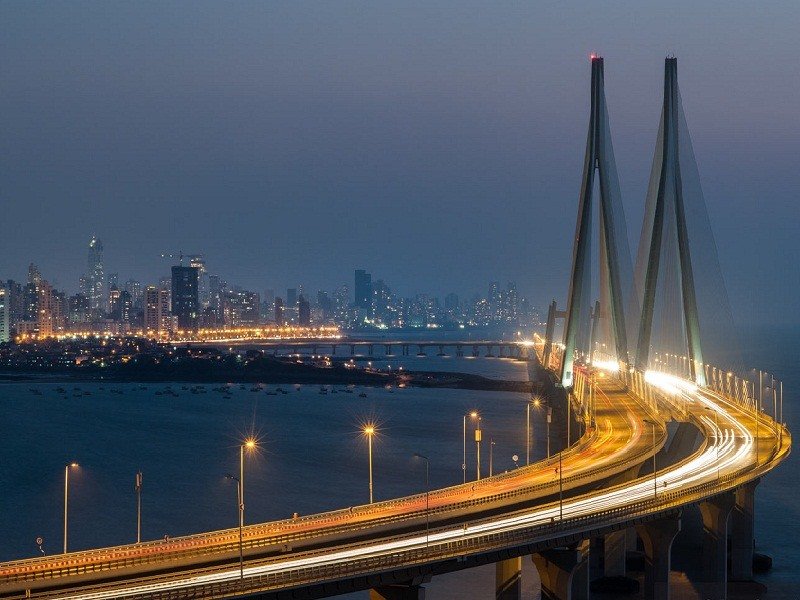
The Rajiv Gandhi Sea Link which also operates under the name Bandra-Worli Sea Link stands as an iconic structural achievement throughout Mumbai. This 8-kilometer cable-stayed bridge provides a link between Bandra western suburbs and Worli South Mumbai through the Arabian Sea while shortening travel durations and delivering spectacular views to bridge travelers.
History
The MSRDC designed the Bandra-Worli Sea Link to serve as an essential part of the Western Freeway project with the purpose of relieving traffic congestion and establishing better transportation links between Mumbai’s business areas. Building the Bandra-Worli Sea Link involved a total investment of ₹16 billion as the MSRDC hired Hindustan Construction Company to develop the project.
The construction proceeded in phases so that the first four lanes serve public traffic from 30th June 2009 and all eight lanes became operational on 24th March 2010. Bandra-Worli sea link serves as a vital transportation link for commuters by enabling them to travel between the two destinations in 7 to 10 minutes instead of the previous 45-60 minutes.
- The bridge constructors designed it with pre-stressed concrete-steel viaducts across its eight lanes for extended durability.
- The main span of the cable-stayed bridge reaches its height through two huge vertical towers which extend 126 meters above the sea.
- The structure demonstrates resistance to strong monsoon weather alongside high winds which guarantee secure and trouble-free travel.
- The bridge facilitates daily transportation of about 37,500 vehicles as it serves as an essential part of Mumbai’s transportation infrastructure.
- The bridge opens to vehicles only while spectators can find multiple points for observing its beauty.
- The promenade of Worli Sea Face draws visitors who come to admire breathtaking sea link views during sunrise and sunset times.
- Worli Fort stands as a historical monument that creates a picturesque setting for the bridge.
- Haji Ali Dargah represents a respected place of pilgrimage which stands out prominently from the sea link.
- The seaward view of the bridge can be captured through photographs taken from Marine Drive and the Bandra beachfront areas yet stopping on the bridge is strictly forbidden.
Best Time to Visit
During any part of the day the Bandra-Worli Sea Link offers an impressive sight yet its most enchanting time is seen when lights illuminate it in the night against Mumbai’s skyline. Storms during the monsoon create spectacular coastal views and powerful ocean waves that pound the Worli Sea Face thus creating an exhilarating scene.
8. Prince Of Wales Museum, Mumbai
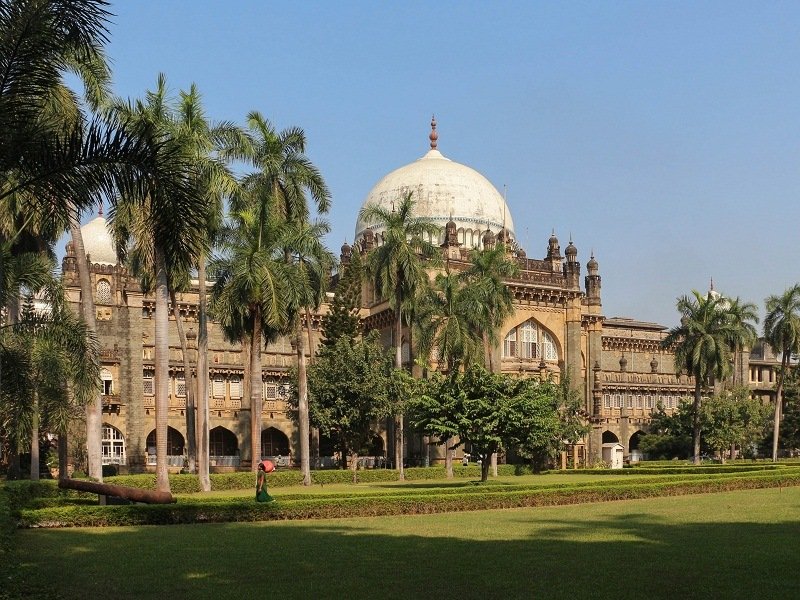
The museum known as Chhatrapati Shivaji Maharaj Vastu Sangrahalaya (CSMVS) used to be called the Prince of Wales Museum and remains today one of India’s top art and history institutions. This outstanding museum situates next to the Gateway of India in South Mumbai making it required destination for enthusiasts studying history together with art enthusiasts and inquisitive visitors.
History
Buildings at the museum served as a tribute to King George V who visited India during his reign. The museum’s design origins date to 1904 but the Prince of Wales placed the construction foundation stone during 1905. George Wittet created the museum building which finished its construction in 1915. The establishment performed its initial function as both a military hospital and Children’s Welfare Center throughout the battles of World War I. The authorities officially opened this museum as the Prince of Wales Museum during 1922. Following the 1990s the museum achieved its current name through dedication to Chhatrapati Shivaji who established the Maratha Empire.
This museum combines three architectural influences from Mughal, Maratha and British colonial periods into an Indo-Saracenic design. The building stands out due to its enormous white dome that originated from Mughal architecture and creates an elegant appearance. The museum presents itself as an elegant sanctuary for visitors among the beautiful garden surroundings. The museum received both the 2010 UNESCO Asia-Pacific Heritage Award for Cultural Heritage Conservation as well as the Indian Heritage Society’s award for Best Heritage Building Maintenance because it qualified as a Grade I Heritage Building.
Several new galleries installation became part of a comprehensive 2008 renovation at the museum that displayed works from Hindu deity Krishna as well as traditional clothing and Indian textile materials. Local cultural events and educational seminars alongside temporary exhibitions take place at this institution to establish it as a dynamic institution for learning and cultural appreciation.
Visitor Information
Entry Fee: ₹70 (Indians), ₹20 (Children), ₹500 (Foreigners), ₹100 (Camera)
Public holidays with Mondays represent the days when Lijjat Patidar Parivar Gruha remains closed for visitors between 10:15 AM and 6:00 PM.
9. Mumba Devi Temple, Mumbai
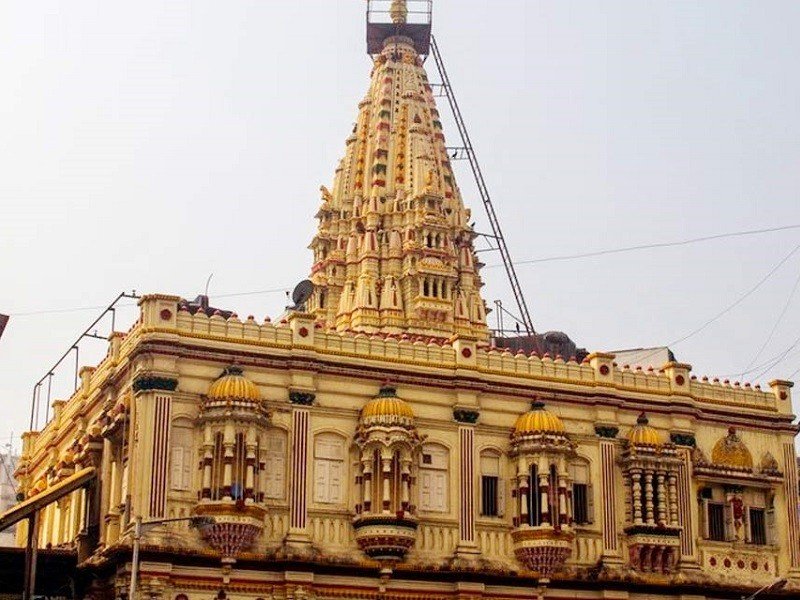
The Mumba Devi Temple located in Bhuleshwar South Mumbai functions as one of the most sacred Hindu temples throughout the entire city. Devotees together with sightseers visit this revered site because it is dedicated to Goddess Mumba while retaining its historical and cultural importance.
History
Goddess Mumba serves as the main deity of Mumba Devi Temple while being seen as a local version of Goddess Parvati through her association with the Koli community who were the original Seven Islands of Bombay residents. Mumbai derives its name from the powerful goddess Mumba which establishes a strong link between the temple and the cultural heritage of the city.
Mumba Devi received worship from Koli fishermen in 1675 when they constructed the temple in Bori Bunder before it moved to Zaveri Bazaar and Bhuleshwar in 1737. The destruction of the original temple between 1739 and 1770 led to the construction of the contemporary building in Zaveri Bazaar, Bhuleshwar that was built during 1737.
The temple stands as a perfect representation of temple designs during the 19th century in Gujarati architecture. Goddess Mumba’s main idol rests inside the shrine under a black stone appearance together with a silver crown and nose adornment and multiple golden decorations. A tiger, the vehicle of the Goddess, stands in front of the deity’s shrine.
The temple’s religious value increases through multiple sanctuaries of Sri Jagadamba and Sri Annapurna and Sri Hanuman found within its complex.
Festivals and Celebrations
Mumba Devi Temple serves as an ideal location for grand festivals especially when Navratri arrives two times per year:
- Chaitra Navratri (March-April)
- Ashvin Navratri (September-October)
- Gupt Navratri (Secret Navratris) in Magh and Aashad months
- Puritma during the Chaitra month marks the celebration of Hanuman Jayanti which brings forth great festival worship.
Visitor Information
- Timings: 7:00 AM – 8:45 PM
- Entry Fee: Free
- Location: Bhuleshwar, Mumbai
10. HARIHARESHWAR
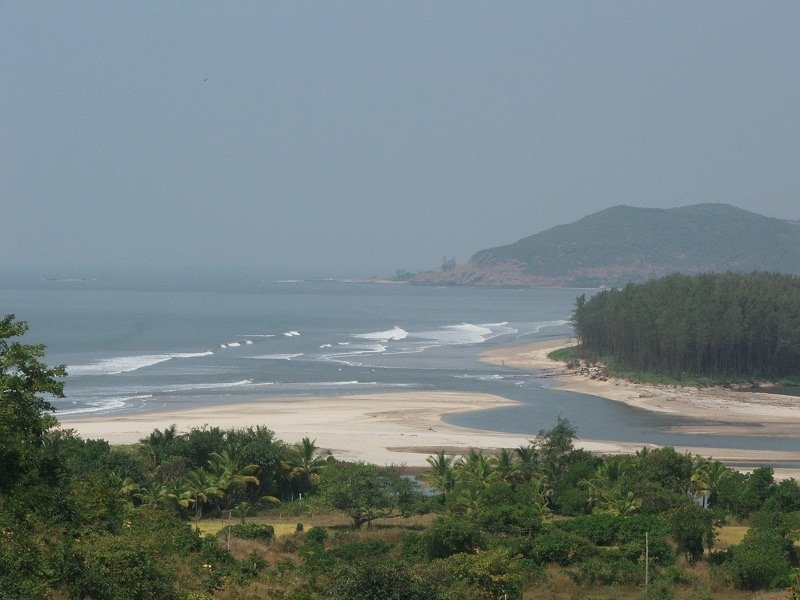
The small coastal town of Harihareshwar exists within the Raigad district of Maharashtra India. Travelers visiting the Konkan region must stop at Harihareshwar which stands as a highly sought-after getaway for Mumbai residents during weekends.
This coastal place called Harihareshwar rests between four mountain ranges named Harihareshwar, Harshinachal and Bramhadri together with Pushpadri. Nature enthusiasts will appreciate the beautiful setting at this location where Savitri River completes its journey to the Arabian Sea. Harihareshwar stands as a holy site which the local people refer to as “Southern Kashi” because it includes the recognized Harihareshwar Temple which worships Lord Shiva. The divine touch of Lord Shiva grants this town its Devghar title which means House of God.
The beachfront offers black sand beaches that create an atmosphere of pure peacefulness to relax completely. Riding waves at this location can be difficult because of rough water conditions and dangerous rocky shores. Visitors get to enjoy thrilling water scooter adventures while exploring exciting speed boat ride activities.
Several outstanding locales surround Harihareshwar which makes the place all the more attractive. The top attractions in this area consist of:
- Shrivardhan Beach – A popular coastal retreat near Harihareshwar
- Diveagar Beach & Temple – Famous for its scenic beauty and religious significance
- Kondvil Beach – A serene, less-explored beach offering solitude
- Kelshi Beach – A hidden gem with pristine waters
- Velas Beach – Known for its Olive Ridley turtle hatchlings
- Bankot Fort – A historical fort offering panoramic views
The worship of a naturally occurring Ganesh idol takes place within the narrow passage known as Ganesh Gully.
Best Time to Visit Harihareshwar
You can best experience the sights of Harihareshwar during the months between October and March because of the enjoyable climate at that time. Devotees from all parts of the country convergiate on Harihareshwar during Maha Shivratri celebrations held in December to February.
Summer months create hot weather conditions in Harihareshwar as monsoons add moisture but they make the landscape more attractive. The winter season offers a delightful climate which creates perfect conditions for beach vacationers together with religious visitors.
11. Hanging Gardens / Kamla Nehru Park, Mumbai
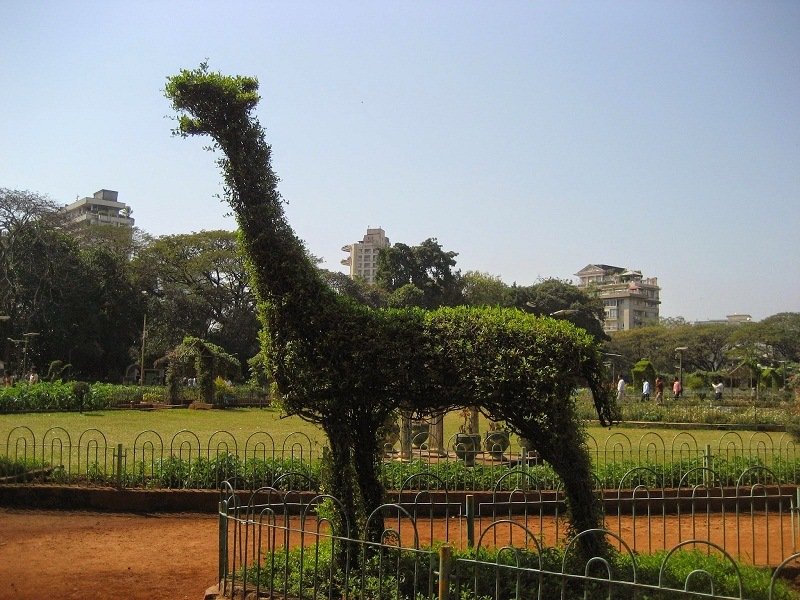
Mumbai symbols the dream city which stands out because of its active urban existence and tall buildings combined with active streets. Hidden within Mumbai’s urban frenzy stands a peaceful haven at the Hanging Gardens which people also know as Pherozeshah Mehta Gardens. The western location of Malabar Hill hosts these wonderful terraced gardens which provide needed relaxation for people who love nature and want to exercise.
History
The Hanging Gardens came into existence during the 1880s through the vision of architect Ulhas Ghapokar to defend the local water reservoir from pollution. Pherozeshah Mehta who established the Municipal Charter devoted to Mumbai received acknowledgment by having the gardens named in his honor. These gardens developed into one of Mumbai’s most cherished natural areas after his passing.
The Hanging Gardens present visitors with expansive wholesome lawns that stretch across a beautiful landscape while offering scenic walking routes beneath a verdant canopy. Visitors are attracted to the flower clock at the center because it remains a distinctive feature among all the gardens. Many visitors including children admire the hedges which take forms of realistic animals.
The gardens present wonderful vistas of the Arabian Sea which enables guests to appreciate magical evening sunsets. The gardens attract both fitness enthusiasts who use the maintained walkways as well as joggers in the morning and families and tourists who seek peace in this environment.
Kamla Nehru Park
People flock to Kamla Nehru Park which stands across from the Hanging Gardens because it represents another main attraction of Malabar Hill. The 4,000 square feet park carries the name of Jawaharlal Nehru’s spouse Mrs. Kamla Nehru. Anyone visiting this location can witness breathtaking views extending from the city skyline all the way to Chowpatty Beach and the celebrated Marine Drive.
The Boot House stands out as a distinctive feature of Kamla Nehru Park where it is commonly known as the Old Woman’s Shoe. Children love this stone structure built in the shape of an Old Woman’s Shoe from the nursery rhyme while it offers unique photo possibilities.
Best Time to Visit & Entry Details
Timings: 5 AM to 9 PM
Entry Fee: Free
Visiting Kamla Nehru Park during morning and evening hours provides the perfect conditions since it allows visitors to enjoy cooler temperatures and spectacular views of the sunset.
12. Mani Bhavan Gandhi Sangrahalaya

The Gandhi Museum obtains its popular name from Mani Bhavan Gandhi Sangrahalaya because it lies close to Sri Babulnath Temple in Mumbai. The historic building remains significant because Gandhi had lived here and it served as a key location in the fight for Indian independence.
History
Among all important sites linked to Mahatma Gandhi Mani Bhavan stands out as one of the primary few. During his stay from 1917 to 1934 Mahatma Gandhi resided at this place while engaging in multiple essential independence movements for India. During his stay at the residence in 1921 Gandhi conducted a four-day fast which helped establish peace throughout Mumbai. This building served as residence for Revashankar Jhaveri who supported Indian National Congress and remained close to Gandhi despite being a major Gandhiji associate. Mahatma Gandhi launched major national liberation movements including Non-Cooperation Movement and Satyagraha, Swadeshi Movement and Khadi Movement along with Khilafat Movement from this specific location. Through its understanding of historical importance the Gandhi Smarak Nidhi acquired the building in 1955 as an everlasting homage to Mahatma Gandhi.
The two-storeyed building located on Laburnum Road serves as a valuable representation of Gandhiji’s enduring historical significance. The ground floor of the museum contains a well-furnished library which showcases an extensive range of Gandhi-related materials consisting of photographs alongside posters and slogans and letters between leaders Hitler and Roosevelt as well as Einstein’s letter of appreciation. A collection of books from Gandhi’s reading list includes Tolstoy’s works along with Shakespeare plays and his worn-out edition of ‘Les Miserables.’
Visitors at the first floor can enter an auditorium which displays Mahatma Gandhi films and plays his recorded speeches upon demand. The upper floor is essential because it demonstrates the original design of Gandhiji’s residence area and workspace. The core displays at this site include his famous spinning wheel (Charkha) and rope bed (Charpoy). Adjacent to this room, an exhibition showcases Gandhiji’s life journey through miniature figures in detailed tableaux. A bronze plaque on the terrace indicates the spot where police officers arrested Gandhi during January 1932 but also served as his place for resting and conducting religious ceremonies.
The entrance hall provides an opportunity for visitors to buy both photography and stamps from Gandhi while offering Gandhiian literature and status sculptures and medallions.
Nearby Attractions
Travelers visiting Mani Bhavan can see multiple points of interest near the museum such as Mahalakshmi Temple and the Jain Temple together with Kamala Nehru Park. The museum stands close to August Kranti Maidan which marked the launch site of the Quit India Movement in 1942.
Visitor Information
Entry Fee: Rs. 20 per person
Timings: 9:30 AM to 6:00 PM
Location: Laburnum Road, Mumbai
13. Sanjay Gandhi National Park, Mumbai
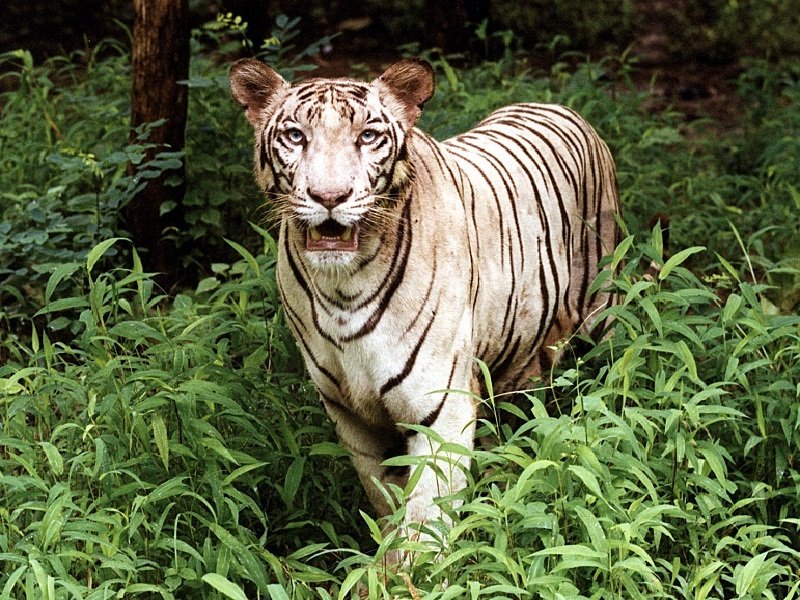
The protected area of Sanjay Gandhi National Park (SGNP) continues to exist under its previous name as Borivali National Park in the northern section of Mumbai. The natural reserve ranks as a leading wildlife destination in Maharashtra which offers compulsory visiting possibilities to natural lovers alongside traveling adventure enthusiasts in Mumbai.
History
During the pre-independence period the national park bore the name Krishnagiri National Park while occupying only 20.26 sq. km. of land. Nonstop park expansion led to its growth from 20.26 to 104 sq. km as it included adjacent reserve forests. Sanjay Gandhi took over as the director of Borivali National Park during 1974 before the park dedicated itself as Sanjay Gandhi National Park in 1981 to remember Sanjay Gandhi who lost his life in an air accident in 1980.
Sanjay Gandhi National Park achieves fame because it provides visitors with breathtaking natural beauty together with its varied fauna and its historical value. Located in Mumbai city the dense forested park hosts a large number of birds and a limited population of tigers to become a green sanctuary in the urban setting.
The Kanheri Caves exist inside Sanjay Gandhi National Park extending from the 9th century BCE until the 1st century BCE. The Buddhist phases carved into massive basaltic rocks served as a vital center for learning during the past as a spiritual destination for pilgrims. The spiritual impression of the region rises through the presence of a Jain Temple showcasing three grand carved statues.
The park holds two tranquil lakes called Tulsi Lake and Vihar Lake while supplying water to Mumbai. The Deer Park and Lion and Tiger Safari and Samadhi of Mahatma Gandhi can be found by visitors throughout the park.
Devotees of wildlife encounters at SGNP have access to Lion and Tiger Safaris that let participants navigate near these thrilling animals. Guests watching wild cats from six feet distance can observe about six tigers and twenty-five lions which inhabit enclosed enclosures at the park.
Due to its unique diversity of species the park successfully attracts more than 2 million yearly visitors. Freshwater and marine ecosystems in Satonda Island attract botanists because they support more than 800 species of flowering plants and a single species of highly rare karvi flower which only appears once every eight years.
Nearby Attractions
Travelers visiting Mani Bhavan can see multiple points of interest near the museum such as Mahalakshmi Temple and the Jain Temple together with Kamala Nehru Park. The museum stands close to August Kranti Maidan which marked the launch site of the Quit India Movement in 1942.
Visitor Information
Entry Fee: Rs. 20 per person
Timings: 9:30 AM to 6:00 PM
Location: Laburnum Road, Mumbai
14. Jama Masjid, Mumbai
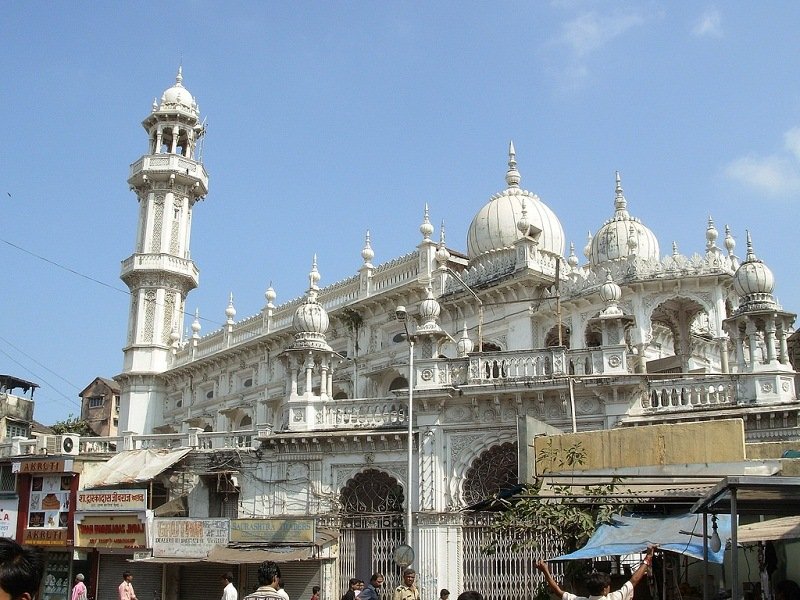
Mumbai possesses Jama Masjid as its biggest and most historical mosque under its name of Friday Mosque. Sheikh Memon Street hosts this important place of pilgrimage which stands in the vicinity of Crawford Market.
History
The prayer facility started at Dongri before it received a new location near Crawford Market. The mosque first appeared in the 18th century but Governor William Hornby sent his orders for demolition to the site in 1770 CE.
Before the foundation of Jama Masjid was built upon the grounds that had served as a large water reservoir maintained by the Konkani Muslim merchant within his garden space. The owner of this place granted permission to build a mosque after holding the requirement that the existing tank had to stay in operation. Construction work for the current Islamic mosque at Jama Masjid started in 1775 CE before completion in 1802 CE.
Jama Masjid presents itself as a quadrangle formed of brickwork and stone while being wrapped by terraced double-tall buildings. Along the eastern side of the main entrance stands a courtyard that holds the ancient tank with 10 feet of water depth. Gold and silver fish together with turtles find shelter in this water reservoir which obtains its supply from natural springs and contains a traditional sacred bathing area. People can access contemporary facilities for their needs at this location.
The buildings above the mosque receive structural support from sixteen black stone arches which originate from a depth within the tank. The arches received construction in 1874 using funds of Rs. 75,000. Five rows of wooden pillars uphold the mosque structure at the upper floor level while each pillar contains sacred book storage compartments.
Additional noteworthy features of the mosque consist of:
- Built in 1898 the mosque received its large windows which face north, east and south.
- The establishment of the school building happened in 1902 for Rs. 20,000.
- Religious and Educational Importance
The Sunni Muslim community of Mumbai maintains Jama Masjid as their main mosque through management by the Konkani Muslims. The Madrassa Muhammadiah stands connected to the mosque as an educational establishment which provides free religious and secular learning to Muslim students. The educational institution offers a student accommodation known as the hostel within its facilities.
Visit Jama Masjid
Near the southern section of Mumbai Jama Masjid represents both Mumbai’s Islamic history and Arabian architecture throughout the city. People from all walks of life who have an interest in history along with architecture and spirituality will find something special at this mosque.
15. Bhau Daji Lad Museum
The Dr. Bhau Daji Lad Museum or Victoria and Albert Museum represents the eldest museum in Mumbai as it stands as the third oldest institution in India. This museum manifests as a significant historical landmark located within the well-known Jijamata Udyan in Byculla East which demonstrates Mumbai’s cultural heritage through art and history. Visitors attribute this attraction to being an essential spot for tourists within the city.
History
The museum started its existence in 1855 CE as an institution dedicated to decorative and industrial arts before moving to its current location in 1872 CE thus becoming known as Victoria & Albert Museum. Dr. Bhau Daji Lad Museum was established in 1975 after Bhau Daji Lad received recognition through the naming of the institution which he had instrumental in founding. INTACH performed complete restoration work on the museum building before its 2008 public reopening.
- Dr. Bhau Daji Lad Museum contains six main sections that provide distinct views into Mumbai’s artistic and historical heritage.
- Origins of Mumbai – Showcasing the city’s evolution and development.
- 19th Century Paintings – Featuring exquisite paintings from the colonial era.
- The gallery of Industrial Arts presented Indian art and craftwork which found widespread demand from European market buyers.
- Kamalnayan Bajaj Special Exhibitions Gallery – Hosting temporary exhibitions and cultural events.
- Kamalnayan Bajaj Mumbai Gallery – Focusing on the city’s transformation over the years.
- Founders’ Gallery – Paying tribute to the museum’s founders and contributors.
Artifacts and Exhibits
The museum possesses a huge collection that comprises diverse items such as:
- The museum possesses Mumbai’s archaeological discoveries as well as its historical photographs alongside diverse territorial maps.
- The museum displays clay models combined with silver objects and copper items and traditional clothing.
- A rare 17th-century manuscript of Hatim Tai.
- Paintings from early workshops of the Sir J.J. School of Art.
- Approximately 4,000 precious manuscripts together with reference books are safely maintained.
The elephant sculpture made from monolithic basalt material once stood at Elephanta Island before museum officials brought it back from the sea and placed it outside the museum entrance.
The museum functions as a dynamic cultural center because it organizes art shows together with educational sessions and training courses for heritage saving initiatives. Through its exemplary work in this domain the museum received the prestigious Excellence Award from UNESCO.
Visitor Information
The institution operates daily from 10:30 AM to 4:30 PM but remains closed during Wednesdays and public holidays.
Entry Fee:
- Rs. 10 for Adults
- Rs. 5 for Children
- Rs. 100 for Foreigners
16. Malshej Ghat

Malshej Ghat stands as a majestic mountain pass which sits along the Kalyan-Ahmednagar Road in the Thane district of Maharashtra and ranks as an outstanding spot in the Western Ghats region. Malshej Ghat draws visitors who love nature and adventure because it shows stunning topography with abundant green hills and flowing waterfalls. The destination is highly favored by Pune and Mumbai tourists who need an escape from urban lifestyle.
A 700-meter-high altitude positions Malshej Ghat as a perfect base for relaxing vacations. Travelers will find an ideal escape into nature because Malshej Ghat provides tough mountain paths and beautiful lakes with walking routes that create a perfect paradise. When monsoon arrives the region turns fully green while mountain valleys reveal low cloud cover and flowing water cascades from the cliffs to provide a unique magical experience.
Those who seek adventure through hiking can explore multiple trekking paths across its attractive waterfalls and beautiful vistas at Malshej Ghat. The Harishchandragad trek serves as the main attraction because it leads visitors to a historical fort containing ageless temples as well as multiple fortresses. One can find excitement by scaling the 400 staircase staircase of Shivneri Fort which stands as the birthplace of Chhatrapati Shivaji Maharaj.
Malshej Ghat provides ideal bird watching conditions because it shelters various bird species and flamingos that arrive during monsoons.
Visitors should note that Malshej Ghat provides only minimal accommodation choices for those seeking a peaceful retreat. The Flamingo Hill Resort under MTDC control offers visitors one of the most desirable accommodations in the area. Tourists can find select private resorts in this area if they want to stay overnight. The majority of Malshej Ghat visitors opt to visit as daily tourists from both Pune and Mumbai.
Best Time to Visit Malshej Ghat
The optimal visiting window at Malshej Ghat runs from July through March when every month presents its own special charm.
Monsoon (July – September): Witness the beauty of overflowing waterfalls, misty hills, and lush greenery. The trails become highly dangerous for trekking when rainfall is heavy so people should avoid visitation.
The winter months between October and February present favorable conditions for visitors to enjoy sightseeing and trekking and birdwatching because of the nice and cool weather conditions.
The temperature in Malshej Ghat during Summer (March through June) stays more comfortable compared to the surrounding regions creating a suitable summer vacation destination.
17. Matheran
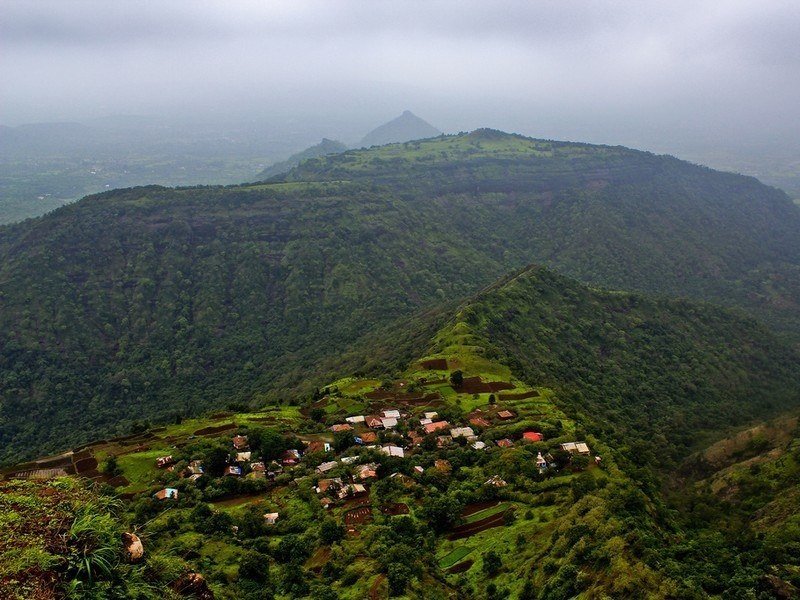
Matheran serves as a delightful Raigad district hill station and Maharashtra features among the state’s premier monsoon destinations. People from Mumbai and Pune visit Matheran as their preferred destination to find peace outside urban areas. Matheran stands as a necessary travel location due to its attractive natural beauty together with breathtaking sceneries against its eco-friendly setting.
History
Matheran stands out in historical importance from its position at 800 meters elevation in the Western Ghats. Hugh Poyntz Malet the Thane district collector in 1850 discovered this hill location which Lord Elphinstone the Bombay Governor afterward created into a summer sanctuary for the British. At Matheran exists the birthplace of Veer Bhai Kotwal who achieved legendary status as a freedom fighter.
The Matheran Hill Railway which Sir Adamjee Peerbhoy built in 1907 extends over 20 km through forest areas and delivers panoramic views to its passengers. A journey on the Matheran Light Railway stands as the prime attraction in Matheran due to its status as a heritage train route. The train’s short-term shutdown has not decreased the attraction status.
Matheran holds the status of an eco-sensitive zone according to declarations from the Ministry of Environment and Forests of India. Matheran stands alone as an Asian hill station free from automobiles hence preserving its pristine environment. The area past Dasturi Point holds a private vehicle restriction because Matheran lies 2.5 kilometers away from that location. People visit Matheran through three different modes: walking, hand-pulled rickshaws and horseback riding.
- Matheran provides 38 beautiful viewpoint locations that showcase unmatched scenery of the Western Ghats to visitors. Some of the must-visit
- People seeking adventure at Matheran must participate in these various activities:
- Multiple hiking and trekking paths from Dasturi Point create access to amazing vista points.
- Horse Riding serves as a distinctive method to discover this hill station.
- Rock Climbing together with Rappelling gives thrill-seekers an ideal experience.
Best Time to Visit Matheran
Travelers should plan their Matheran visit anytime between July and October because August through September represents the main visitor period. The monsoon period shifts the hill station to a colorful green haven through which waterfalls blend with misty valleys to increase its appeal.
18. Lonavala

The Pune district’s hill station of Lonavala exists at 622 meters elevation in the Sahyadri Ranges. The natural border between the Deccan Plateau and the Konkan Coast has transformed Lonavala into a renowned hill station of Maharashtra thus becoming essential for travelers visiting the area.
Lonavala and Khandala
Lonavala together with its companion hill station Khandala functions as one of the major weekend destinations that visitors from Mumbai and Pune regularly visit. Tourists who explore the region find that the 38 square kilometer expanse of Lonavala earned its name from the Sanskrit phrase ‘Lonavali’ which signifies ‘cave cluster’ because many cave sites exist throughout this area. Two crucial highlights attracting visitors to this destination are Lohagad Fort and Karla Caves together with Rajmachi Point.
History
Lord Elphinstone founded Lonavala together with Khandala when he served as Governor of Bombay Presidency during 1871. A historical record shows that Mughal rule followed Yadava Dynasty control of this territory. British rule arrived after Marathas had control of the area following the Mughals as its rulers. The forts situated in and near Lonavala had a crucial influence on Maratha and Peshwa empire military background.
Top Tourist Attractions in Lonavala
The town of Lonavala attracts visitors because it displays remarkable natural scenery alongside its historical locations and Earthly features. Lonavala offers multiple sites that should be priority stops for visitors.
- Lohagad Fort – A historic fort with breathtaking views
- Rajmachi Point – Offers panoramic views of the Rajmachi Fort
- Karla Caves & Bhaja Caves – Ancient Buddhist rock-cut caves
- Valvan Dam – A serene spot for nature lovers
- Lonavala Lake – A peaceful retreat amidst nature
- From its vantage point Tiger’s Leap presents a striking view of a tiger appearing to jump into the valley.
- Bhushi Dam – A popular monsoon attraction
- Kune Waterfalls – One of the highest waterfalls in Maharashtra
The region includes the three attractions which provide perfect conditions for trekking activities while showcasing historical sites across Tikona Fort, Visapur Fort and Tung Fort.
Best Time to Visit Lonavala
Nature loves the monsoon season in Lonavala and Khandala since July to September offers the ideal time for visitors to see the landscapes become green and see waterfalls at their peak.
Those seeking relief from urban commotion should put Lonavala on their Maharashtra destination list because it contains beautiful natural landscapes as well as historical significance.
19. Mahabaleshwar
The Maharashtra town of Mahabaleshwar rests above 1,353 meters in the mountains of Western Ghats in Satara district. Mother Nature created this picturesque getaway which people consider one of India’s leading hill stations and draws visitors across the country who love nature or seeking adventure.
A Tranquil Escape Amidst Nature

The ‘Queen of Hill Stations’ in Maharashtra represents Mahabaleshwar because of its renowned landscapes and pleasant climate and luxuriant natural beauty. The area consists of Malcolm Peth and Old Mahabaleshwar together with Shindola village. The fantastic hill-town vistas with misty mountain surroundings attract numerous visitors from Mumbai and Pune together with Kolhapur. Arthur’s Seat alongside Lingmala Waterfall and Pratapgad Fort make this region more attractive for tourists.
History
In 1215 CE King Singhan of Devgiri built his first temple together with a water tank at the starting point of the Krishna River. During the 16th century the Chandarao Maratha family exercised their rule over the region until the arrival of Shivaji Maharaj in the following 17th century. During his period King Shivaji ordered the construction of Pratapgarh Fort which became famous in 1656 CE. The British established the resort characteristics of Mahabaleshwar after the region became the Bombay Presidency’s summer capital during 1829-30.
The Origin of the Mighty Krishna River
The Krishna River begins at Mahabaleshwar before it traverses through Maharashtra and continues to Karnataka then Telangana before reaching Andhra Pradesh. The divine source of the Krishna River emerges from a cow-shaped water outlet within the Panch Ganga Temple. The four rivers Koyana along with Venna and Savitri and Gayatri emerge in this same geographic area.
Top Tourist Attractions in Mahabaleshwar
Tourists will discover numerous attractions in Mahabaleshwar because the town has both natural panoramas and historical shrines and fortress estates.
Visitors can see Pratapgarh Fort which Shivaji Maharaj constructed because it provides Sahyadri hills vista from its location.
- Venna Lake – A picturesque lake perfect for boating and picnics.
- Father of Fishes – Lord Shiva receives worship in the Mahabaleshwar Temple.
- Krishnabai Temple – The origin point of the Krishna River.
- Lingamala Falls – A mesmerizing waterfall ideal for nature lovers.
- Visitors associate Tapola with its nickname the ‘Mini Kashmir of Maharashtra.’
- Panchgani – A nearby hill station famous for its scenic beauty.
The outstanding views of valleys and mountains can be enjoyed from six notable viewpoints including Arthur’s Seat, Wilson Point, Kate’s Point, Elephant’s Head Point and Connaught Peak and Bombay Point.
Best Time to Visit Mahabaleshwar
People can visit Mahabaleshwar at any time because the town experiences moderate weather throughout the entire year. The ideal period for visiting Mahabaleshwar falls between June and October due to the monsoons during which the mountains become extravagantly green while the waterfalls intensify their beauty.
20. Panchgani
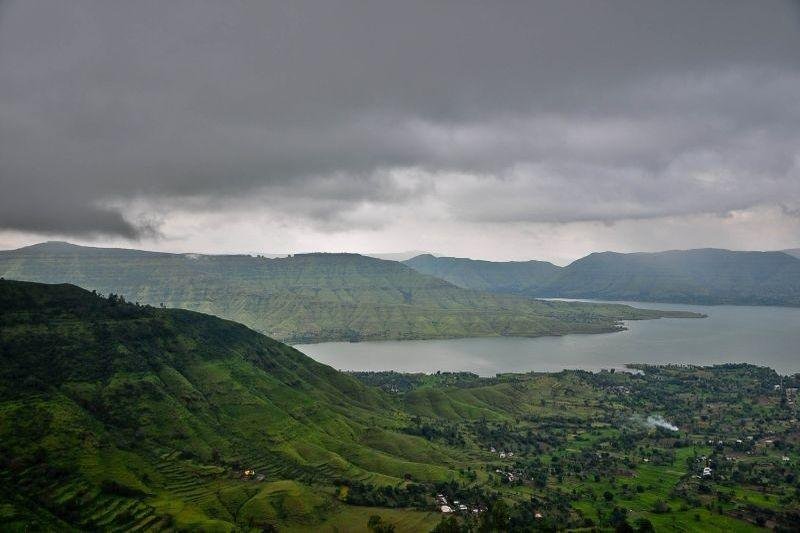
The hill resort Panchgani frequently called Paachgani exists as a premier destination in Satara district of Maharashtra. Tourists and adventure seekers alike discover Panchgani as a mandatory stop for its welcoming climate as well as its panoramic jewels and its colonial legacy. The scenic destination serves as a vital stopover in Maharashtra travel packages which operate near Pune.
Panchgani rests at an elevation of 1,334 meters where the panorama of magnificent natural settings surrounds it. From east to west the area is limited by Wai Bavdhan Nagewadi Dam boundaries and from north to south the region stretches between Dhom Dam and Khingar Rajpuri. Panchgani takes its name from the five magnificent hills of Sahyadri range that create its captivating landscape. The area east of Panchgani includes five picturesque villages that are Dandeghar, Khingar, Godwali, Amral and Taighat.
History
British military officials visited Panchgani for the first time during the 1860s looking for summer vacation ground. During rainy seasons the British preferred to stay in Mahabaleshwar but discovered the area was unusable. The consistent favorable climate of Panchgani allowed British officials to create this town as their retirement haven. The British superintendent John Chesson gave substance to the development of Panchgani as a planned hill station by both initiating infrastructure development and introducing plant species.
Legend connects Panchgani to Mahabharata since it is thought that the Pandavas used this area during their time of exile. Devil’s Kitchen cave stands as a vital mythological attraction because local folklore points to it as the residence of the Pandavas during their time of exile.
Top Attractions in Panchgani
The many visitor attractions in Panchgani feature combination of thrilling activities and historical landmarks and peaceful relaxation sites. Visitors must experience these locations when visiting Panchgani:
- Table Land – A vast plateau offering panoramic views of the valley and an excellent spot for horse riding and nature walks.
- Parsi Point stands as a perfect spot to witness the beautiful view of the Krishna Valley and Dhom Dam.
- Adventurers will find pleasure in exploring Kamalgadh Fort as an ancient fortress.
- The mysterious Devil’s Kitchen serves as a cave once linked to the Pandava legend.
- Rajpuri Caves serve as historic religious caves which contain a sacred temple.
- From Sydney Point you can witness remarkable scenery during both sunrise and sunset as its name honors Sir Sidney Beckwarth.
- The famous Mapro Gardens provides visitors with delectable strawberry farms together with fresh fruit-based products for enjoyment.
- Visitors admire both the scenic beauty and boating and resting activities at Dhom Dam.
Accommodation and Infrastructure
The resort town contains many British colonial houses built during the colonial era together with historic Parsi homes and numerous lodging facilities available for visitors. Both leisure activities and education take place at this location because of the prestigious residential schools and health resorts.
Best Time to Visit
A visit to Panchgani should take place during the time period from September to February because of its pleasant and cool climatic conditions. During September through December the town reaches its peak tourist season because the natural surroundings turn exceptionally beautiful during the monsoon and winter months.
related articles : Top 5 Best Places to Visit in Somnath for Spiritual & Scenic Views
Stay Informed With the Latest & Most Important News
Previous Post
Next Post
-
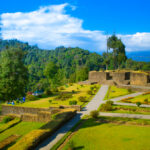 01Top 5 Best Places Visiting in Gyalshing – Monasteries, Lakes & Scenic Escapes
01Top 5 Best Places Visiting in Gyalshing – Monasteries, Lakes & Scenic Escapes -
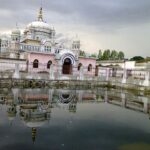 02Top 5 Best Places Visiting in Panna – Temples, Waterfalls & Wildlife Escapes
02Top 5 Best Places Visiting in Panna – Temples, Waterfalls & Wildlife Escapes -
 03Top 5 Best Places to Visit in Malerkotla – Malerkotla Fort, Sheesh Mahal & More
03Top 5 Best Places to Visit in Malerkotla – Malerkotla Fort, Sheesh Mahal & More -
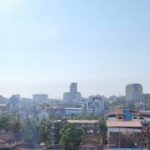 04Top 10 Best Places Visiting in Dakshina Kannad for Culture, Nature & Coastal Charm
04Top 10 Best Places Visiting in Dakshina Kannad for Culture, Nature & Coastal Charm -
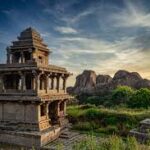 05Top 2 Best Places Visiting in Chitradurga for History, Nature & Adventure
05Top 2 Best Places Visiting in Chitradurga for History, Nature & Adventure -
 06Best Places Visiting in Shopian – Explore Top Attractions & Hidden Gems
06Best Places Visiting in Shopian – Explore Top Attractions & Hidden Gems -
 07Best Places Visiting in Narmadapuram – Temples, Waterfalls & Wildlife Escapes
07Best Places Visiting in Narmadapuram – Temples, Waterfalls & Wildlife Escapes














Pingback: Top 5 Best Places to Visit in Anand – Complete Travel Guide